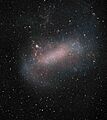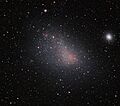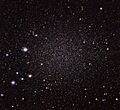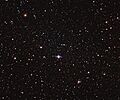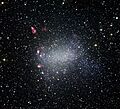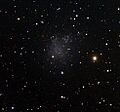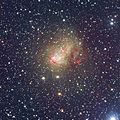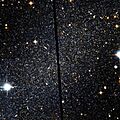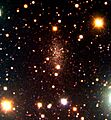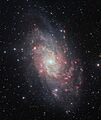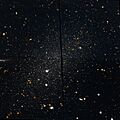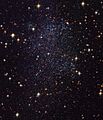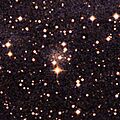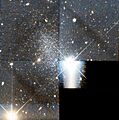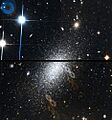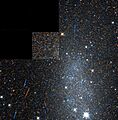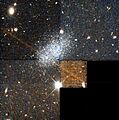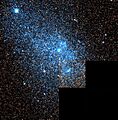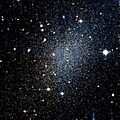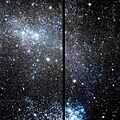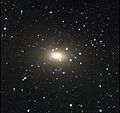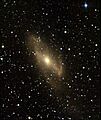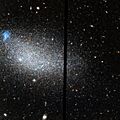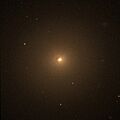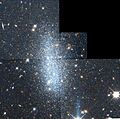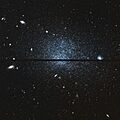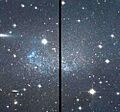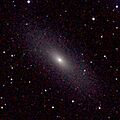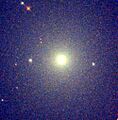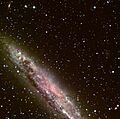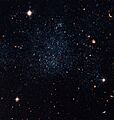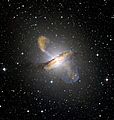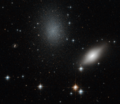List of nearest galaxies facts for kids
This article lists galaxies that are close to our Solar System. These galaxies are within about 12.4 million light-years of us. That's a huge distance, but in space, it's considered "nearby"!
Most of these galaxies are part of our own cosmic neighborhood, called the Local Group. This group includes our Milky Way galaxy, the Andromeda Galaxy, and the Triangulum Galaxy. Some other galaxies on this list belong to nearby galaxy groups, like the M81 Group and the Centaurus A/M83 Group. A few are just floating on their own, not clearly part of any group.
Scientists are always discovering new galaxies, especially small ones called dwarf galaxies. It's hard to find all of them, especially those hidden behind the thick dust and stars of our own Milky Way galaxy. Also, measuring how far away galaxies are is quite difficult, so the numbers can sometimes be a little uncertain.
Contents
Our Galactic Neighborhood
Our home galaxy, the Milky Way, is a huge spiral galaxy with a bar shape. It's where our Earth and Solar System are located. The Milky Way is one of the two largest galaxies in the Local Group, with the Andromeda Galaxy being the other.
The Milky Way's Neighbors
Many smaller galaxies orbit the Milky Way, just like planets orbit a star. These are called satellite galaxies. They are often dwarf galaxies, meaning they are much smaller than the Milky Way. Some of these satellites are even being pulled apart by the Milky Way's strong gravity!
Here are some of the Milky Way's closest satellite galaxies:
- Canis Major Dwarf: This is the closest known galaxy to the center of the Milky Way. It's an irregular dwarf galaxy.
- Sagittarius Dwarf Spheroidal: This dwarf galaxy is slowly being absorbed by the Milky Way.
- Large Magellanic Cloud (LMC): This is a large satellite of the Milky Way, visible from the Southern Hemisphere. It's a barred spiral galaxy.
- Small Magellanic Cloud (SMC): Another satellite of the Milky Way, smaller than the LMC.
Andromeda and Its Satellites
The Andromeda Galaxy (also known as M31) is the largest galaxy in our Local Group. It's a beautiful spiral galaxy, even bigger than the Milky Way! Andromeda also has many satellite galaxies orbiting it.
Some of Andromeda's closest companions include:
- M32: A small, elliptical galaxy that is a close satellite of Andromeda.
- M110: Another elliptical galaxy orbiting Andromeda.
- NGC 185: A dwarf elliptical galaxy that is a satellite of Andromeda.
- Andromeda II: One of many dwarf galaxies orbiting Andromeda.
The Triangulum Galaxy
The Triangulum Galaxy (M33) is the third largest galaxy in the Local Group. It's a spiral galaxy, but it doesn't have a bar shape like the Milky Way or Andromeda. It's the most distant object you can sometimes see with your bare eyes from Earth, if the sky is very dark!
Other Nearby Galaxy Groups
Beyond the Local Group, there are other galaxy groups that are still considered "nearby" in the vastness of space.
The M81 Group
The M81 Group is a collection of galaxies located about 11.7 million light-years away. Its brightest member is Messier 81, a large spiral galaxy. Another famous galaxy in this group is Messier 82, which is known for its intense star formation, making it a "starburst galaxy."
The Centaurus A/M83 Group
This group is centered around two prominent galaxies: Centaurus A (NGC 5128) and Messier 83 (NGC 5236).
- Centaurus A is a very bright galaxy that looks like an elliptical galaxy with a dark dust lane. It's also a strong source of radio waves.
- Messier 83 is a beautiful spiral galaxy with a lot of star-forming regions, giving it a "grand design" appearance.
Isolated Galaxies
Some galaxies are not part of any large group and are considered "isolated." One example is the Wolf-Lundmark-Melotte (WLM) galaxy, which is located at the very edge of the Local Group. It's a small, irregular galaxy that seems to have developed on its own, without much interaction from larger galaxies.
Exploring the Cosmos
Scientists use powerful telescopes to study these nearby galaxies. By observing them, we can learn more about how galaxies form, how they interact with each other, and how they change over billions of years. Each new discovery helps us understand our amazing universe a little better!
Images for kids
See also
 In Spanish: Anexo:Galaxias más cercanas para niños
In Spanish: Anexo:Galaxias más cercanas para niños
- Lists of astronomical objects
- List of galaxies
- List of nearest stars and brown dwarfs
- List of spiral galaxies




